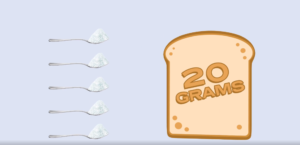Orange & Yellow Fruits and Veggies
Orange and yellow fruits and veggies are our next colors of the food rainbow, and though there are many delicious options from which to choose, we’re going to focus our efforts on a particular handful… or bushel-full.
Carrots

Ideal Protein Phase
Phases 2 & 3
Significant Vitamins & Minerals
Beta-carotene, Vitamin K, Vitamin C, Potassium, Fiber
Although these vegetables come in different colors, the ones we see most often in the grocery store are bright orange in color, and it’s this very color that gives this crunchy veg its highest vitamin content. The Potassium in carrots is a great help too, lowering your chances of circulatory issues by keeping your blood pressure in a better place. Carrots aren’t part of Phase 1 protocol because of their larger amount of carbs, but they are a great snack or part of a meal once you reach your goal weight and are working to maintain. But should you eat them raw or cooked? According to several studies, carrots are actually one of the few veggies that show an increase in minerals (specifically, beta-carotene) when cooked. So, it looks like you’re going to reap the benefits of this magnificent plant no matter how you decide to eat them!
Sweet Potatoes

Ideal Protein Phase
Phases 2 & 3
Significant Vitamins & Minerals
Beta-carotene, Vitamin C, Manganese, Vitamin B6, Potassium
Sweet potatoes also contain large amounts of beta-carotene, giving carrots some stiff competition when comparing which has more. However, the vitamin A that results from consuming the beta-carotene protects much more than our eyes. This phytonutrient is a big part of the team that builds the mucous membrane defenses throughout your body, particularly in your gut. This gut lining protects your body against potentially harmful bacteria which can easily be introduced into the body through eating.
Sweet potatoes are also not part of Phase 1 protocol, again because of their amounts of carbs, but when Phase 2 rolls around, enjoy one every day if you want! They make a fantastic starchy addition to a meal, and you can bake them, boil them, or even mash them (with a little bit of butter and some chopped pecans… MMMmmmm).
Citrus

Ideal Protein Phase
1, 2 & 3 (lemons and limes only during Phase 1)
Significant Vitamins & Minerals
Significant Vitamins & Minerals: Vitamin C, B vitamins, potassium, phosphorous, magnesium, copper
Grapefruit and Oranges and Lemons! Oh my! Although there are dozens of citrus varieties, I’m going to focus on these three yellow and orange choices. Lemons are a favorite of Phase 1 while grapefruit and oranges get to be enjoyed from Phase 2 onward. Adding delicious flavor to meats and vegetables with their juice or zest, or being eaten on their own, citrus fruits are full of many vitamins and antioxidants. Vitamin C definitely reigns supreme within this produce, but they also have good amounts of other vitamins and minerals that your body needs to function properly. Honestly, there are just too many to name!
As most of us know, vitamin C increases your body’s immune system and its protective abilities against foreign invaders. The citrate gained from eating citrus can help your renal system, specifically your kidneys, by minimizing the likelihood of forming kidney stones. Additionally, the flavonoids within citrus fruits have been shown to help protect against cancers, heart disease, and even decrease your chances of experiencing neurodegenerative diseases.
I personally like to eat grapefruit and oranges on their own, but lemons are too tart for me to sink my teeth into. However, I do love to slice lemon for my water, for my poultry or salmon, or to mix with some olive oil for some homemade dressing.
Yellow Squash

Ideal Protein Phase
1, 2 & 3
Significant Vitamins & Minerals
Significant Vitamins & Minerals: Beta-carotene, Vitamin B6 & B2 (Riboflavin), Vitamin C, Manganese, Potassium
Yellow squash and zucchini are very similar to one another, so much so that it’s often hard to tell them apart beyond their color. Along with beta-carotene, this summertime veggie has many beneficial vitamins and minerals, especially in the Vitamin B group. These vitamins, like Vitamin A, also contribute to the breaking down of food components and helping to strengthen mucous membranes within the gut. Vitamin B2 is especially high in yellow squash which is a helpful thing if you eat a lot of it considering that vitamin B2 is required for absorbing and activating iron, folic acid, and vitamins B1, B3 and B6. And because Vitamin B2 is constantly excreted by the body, it’s a good idea to eat this veggie often. Additionally, it’s also significantly lower in sodium than zucchini is, so if you need to watch your sodium numbers but still want the benefits of summer squash, it’s your best bet.
Grilled, baked, roasted…With so many ways to cook, I don’t have a particular favorite although it’s really fun to send through a spiralizer for “pasta” noodles. I’m certainly a fan.
Spaghetti Squash

Ideal Protein Phase
1, 2, & 3
Significant Vitamins & Minerals
Significant Vitamins & Minerals: Beta-carotene (Vitamin A), Pantothenic Acid (Vitamin B5)
Speaking of pasta, if you’re like me, you love pasta, but you know eating it isn’t great for your body. Spaghetti squash is another option to fulfill those pesky pasta cravings without too many calories. While it doesn’t have as much beta-carotene as carrots or sweet potatoes, it’s still rich in the micronutrient, and during Phase 1, it’s a great way to get some vitamin A into your system.
Vitamin B5 is also pretty prominent in spaghetti squash, and it’s this vitamin (and other B vitamins) that help your body to make red blood cells and convert your macronutrients into energy. It can also improve the health of your hair, skin, and nails and even promote greater digestive, liver, nervous system, and adrenal functions.
Roasting it is the typical way to prepare this versatile food, but I’ve been known to steam it, bake it, or even microwave it with a little salt, pepper, and a drizzle of olive oil. I’m– for one– very glad that it is part of all IP phases!




